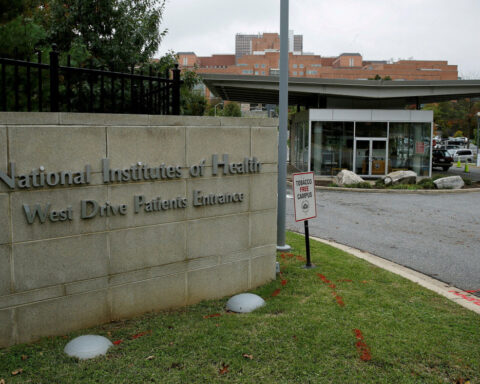Nearly everyone experiences intrusive thoughts - unwanted, disturbing ideas that seem to come out of nowhere. These repetitive mental images or urges often involve violent, sexual, or morally questionable content violating one's sense of character. While intrusive thoughts cause significant distress, they generally pose no actual risk of harm. Professional treatment can alleviate their suffering and regain peace of mind.
Intrusive thoughts feel egregiously opposed to a person's true nature and desires. A hiker staring down a cliff imagines suddenly pushing their loved one. A doting parent envisions stabbing their precious newborn. These thoughts rarely align with the person's behavior or goals. "It's ego-dystonic - it's the opposite of who they truly are," explains Stephanie Woodrow, clinical director at the National Anxiety and OCD Treatment Center.
Intrusive thoughts afflict patients battling anxiety, obsessive-compulsive disorder (OCD), depression, or PTSD. Stressful environments sometimes trigger these unwanted thoughts as the brain grasps for control and certainty, according to Dr. Sue Varma, psychiatrist and author. However disturbing in content, the thoughts ultimately express core human concerns. "Its target is often about what people care about most," notes Woodrow. Someone continually picturing awful outcomes has a deep desire for health and security. Intrusive thoughts highlight valued relationships since content typically threatens harm to loved ones.
Without treatment, attempts to cope can severely disrupt daily routines. The repetitive thinking leads some to avoid driving, interacting with family, or even washing hands. Compulsive reassurance seeking serves to briefly reduce anxiety and uncertainty. However, continually acting on these thoughts reinforces harmful thought patterns. People with contamination fears may wash their hands endlessly until their skin becomes raw and painful. Incest-related imagery could make someone cease contact with family. Varma notes that the reduced quality of life is a pivotal sign that a more severe intervention is needed.
Fortunately, evidence-based therapy provides practical tools for handling intrusive thinking. Exposure and response prevention techniques teach patients how seeing thoughts differently alleviates significant distress. Gradually facing stressful environments in new ways, relying less on unhelpful compulsive habits, patients achieve some distance from the content of their thoughts. "They learn how to see their thought differently, a new relationship with their thoughts; you're looking at it rather than looking from it, if you will," explains researcher Jon Abramowitz. When appropriately treated, recurring thoughts diminish in intensity and frequency. In severe cases, when combined with medications, therapy produces high recovery rates. Lifestyle changes further boost progress.
Intrusive thoughts reveal an intriguing, seemingly contradictory aspect of human psychology surrounding the phenomenon of "unwanted thoughts" more broadly. The very effort to forcibly suppress or avoid specific ideas gives them strength. Abramowitz notes, "What doesn't help is trying to resist or analyze intrusive thoughts because a lot of the time that just makes someone more obsessive."
Concentrated attempts to eliminate a thought, especially those tinged with anxiety or disgust, often backfire. The mind frequently circles back to the bothersome content precisely out of a strong initial desire not to dwell on it. Thoughts gain intensity when perceived as revealing some deeper personal truth that must be managed or solved.
Research on the "white bear problem" clearly demonstrates this paradoxical effect. Psychologist Daniel Wegner first instructed test subjects to avoid thinking about white bears, then later asked them to express whatever came to mind. Those who had tried harder to suppress white bear thoughts ended up reporting more preoccupation with white bears than the control group told to think about anything. External cues also more easily triggered white bear recall among suppressors.
The white bear studies reveal a prevailing human habit of taking thoughts too seriously, particularly intrusive ones with distressing content. Rather than passing ephemeral ideas to be expected in a busy mind, the attempt to forcefully silence these burnt distressing impressions amplifies the thoughts and their associated anxieties. Noticing this pattern helps facilitate progress in overcoming intrusive thinking tendencies through therapeutic approaches.
The core challenge lies in recognizing the essentially harmless, albeit disturbing, nature of these imagination glitches. Thoughts alone, however unpleasant, do no actual harm beyond unpleasant sensations internally. No matter how vivid, imagination cannot directly control external events. Powerful treatment models exist for short-circuiting the unnecessary suffering caused by excessive reactions to normal intrusive thoughts.
Rather than hiding from fears or endlessly analyzing every dark impulse as meaningful, patients learn how disengaging from the thoughts prevents significant life interference. Progress often requires courageously confronting environments that trigger distress and developing new coping methods not reliant on compulsive reassurance rituals to ease uncertainty.
While uncomfortable at times, treatment steadily builds confidence that one's own mind poses no serious danger. Facing the worst imagined outcomes without believing they reflect reality or dictate real actions eliminates their capacity to control behavior. Bad feelings understandably arise in response to vivid fictional betrayals by a person's own mind. However, resisting feelings and analyzing every impulse as deeply meaningful can needlessly prolong suffering. Through therapy, patients overcome both mental compulsions and real-life restrictions arising from ungrounded anxieties. They reclaim freedom of thought and mobility.
Treatment works best when explicitly focused on reducing compulsive avoidance and reassurance behaviors and related anxiety symptoms. The particular thought content proves far less relevant. Improving general mental health through sufficient sleep, exercise, and healthy diets supports but never substitutes for dedicated therapy. Trusted prescribers may integrate medications alongside counseling for therapy-resistant patients once they address dangerous assumptions about risk. Social support and compassion aid healing but are no panacea either. The most direct route to relief involves changes in individual mental habits and environmental exposures guided by professionals.
Cognitive-behavioral therapy, especially variants tailored to OCD treatment, provides well-studied approaches for making peace with intrusive thinking tendencies. Rather than analyzing content, therapists teach practical techniques for reducing associated compulsions and anxiety. Exposure therapy gradually re-introduces triggering ideas and situations in constructive ways that prevent avoidance habits from taking control. Mindfulness practices build awareness of thought processes to handle unpleasant cognition differently.
Procrastination in seeking treatment allows needless suffering. But whenever one reaches out, diverse resources offer hope. Around the nation, those combating anxieties use opportunities like local or campus counseling, community mental health centers, and specialized intensive treatment to successfully regain peace. There are search tools to locate optimal services based on location and insurance. For example, the Anxiety and Depression Association of America offers an online database to find accredited therapists specializing in cognitive behavioral approaches. Large hospital networks usually provide assessments to match patients with appropriate services ranging from counseling for mild disturbances to intensive units assisting those overwhelmed.
The threatening themes running through intrusive thoughts often touch the deepest human vulnerabilities around violence, moral purity, sexual identity, caring for others, and loss of self-control or rational mind. Sufferers are neither inherently strange nor alone in falling prey to painful thought patterns. Judgment about dark mental flashes often discourages vulnerable groups from seeking help early when treatment efficacy proves highest.
Silence and stigma long prevented proper understanding and support. However, modern researchers and clinical providers intimately know the daily reality of intrusive thinking in all populations. Scientists themselves have suffered and healed. Practitioners continually optimize care as diagnostic precision and therapy options expand. Those still struggling deserve encouragement that complete relief is possible, hope stirring dramatic turnarounds.
Through courage and compassion, understanding and determination, those plagued by involuntary thoughts can live fully again. Our mental quirks do not define our character when we open our eyes to growth. There are paths leading away from disruption towards joy through recognizing our shared struggles and reclaiming our minds as fundamentally safe - imaginative faculties not strictly beholden to their most distressing products.
Social media community building has enabled candid conversations to combat feelings of estrangement. Hashtags like #PureO and #IntrusiveThoughts embolden disclosure of taboo topics. Though virtual spaces carry risks, they seed ongoing advocacy work. Continued movement-building for awareness and inclusive care is saving lives.
Sufferers deserve encouragement that life beyond repetitive dark thoughts is possible and worth fighting for. Healing happens gradually and then all at once, rewarding devotion through expanding freedom and meaning. Progress requires courageously confronting uncertainty.
Those courageous in facing uncertainty light the way for those still struggling in darkness to envision their own brighter futures.
We all experience involuntary thoughts. Progress involves expanding perspective - recognizing our minds as imaginative faculties distinct from singular disturbing contents. There are paths leading toward peace through united understanding. We retain collective hope through progress towards compassionate systems enabling human flourishing.

 Trump has begun another trade war. Here's a timeline of how we got here
Trump has begun another trade war. Here's a timeline of how we got here
 Canada's leader laments lost friendship with US in town that sheltered stranded Americans after 9/11
Canada's leader laments lost friendship with US in town that sheltered stranded Americans after 9/11
 Chinese EV giant BYD's fourth-quarter profit leaps 73%
Chinese EV giant BYD's fourth-quarter profit leaps 73%
 You're an American in another land? Prepare to talk about the why and how of Trump 2.0
You're an American in another land? Prepare to talk about the why and how of Trump 2.0
 Chalk talk: Star power, top teams and No. 5 seeds headline the women's March Madness Sweet 16
Chalk talk: Star power, top teams and No. 5 seeds headline the women's March Madness Sweet 16
 Purdue returns to Sweet 16 with 76-62 win over McNeese in March Madness
Purdue returns to Sweet 16 with 76-62 win over McNeese in March Madness








